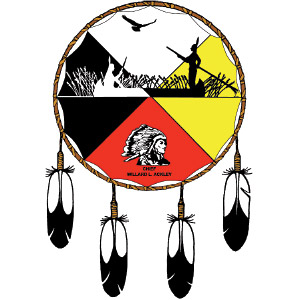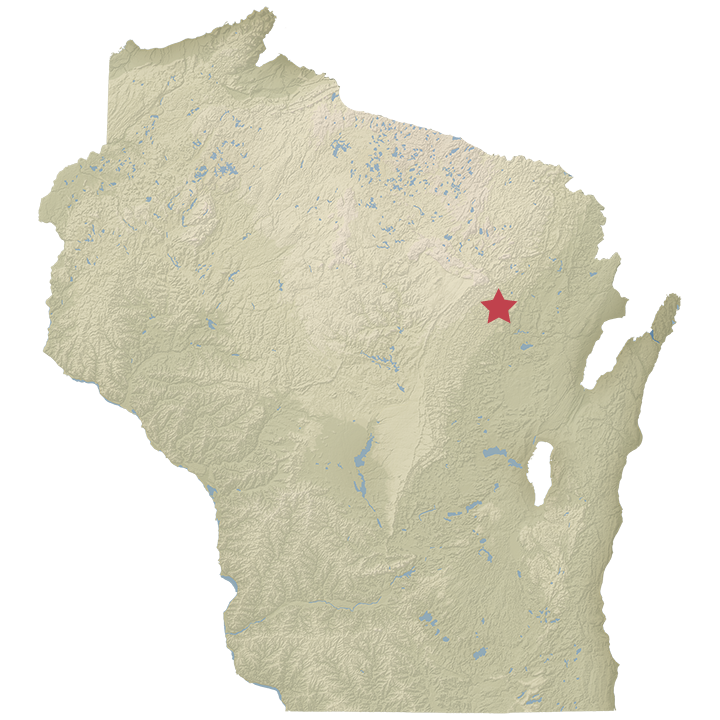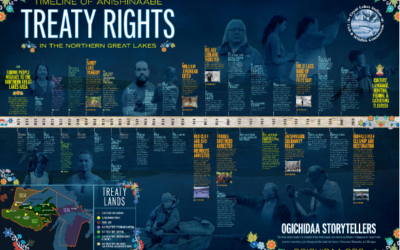
Brief History
The Anishinaabe, also referred to as Chippewa or Ojibwe, migrated from present-day eastern Canada to what is now known as Madeline Island in Lake Superior, led by a vision that their journey would end in a land where the “food grows on water” – wild rice, or manoomin in Ojibwe.
The word Sokaogon means “Post in the Lake” people, because of a spiritual significance of a post, possibly the remains of a petrified tree, that stood in nearby Post Lake. The Sokaogon Chippewa Community is also known as the “Lost Tribe” because the legal title to the 12-mile square reservation from the treaty of 1854 was lost in a shipwreck on Lake Superior.
In the 20th Century, under the provisions of the Indian Reorganization Act of 1934, 1,745 acres of land were purchased for the Mole Lake Indian Reservation. This area lies in southwestern Forest County, near Crandon, Wisconsin. In 1930, a roll or count had been taken in the Mole Lake area, determining there were 199 members.
According to Mole Lake history, members had been promised this land by a treaty signed with Franklin Pierce who was the United States President from 1853-1857. The agent representing the U.S. who was to confirm the treaty and secure the land for them, drowned on his return trip back to Washington D.C.. The Mole Lake, to this day, actively pursue any knowledge or document to support their claim to the original treaty lands that had been lost in their original negotiations.
Before the Mole Lake Indian Reservation was incorporated, members of this nation lived in extreme poverty. At that time in the formation of a tribal constitution and government in the 1930s, the principal means of gaining a livelihood for members of Mole Lake were boat building, wild rice, wreath greens, selling souvenir bows and arrows, and other novelties.
In the 1980s and 1990s, with the advent of gaming, unemployment rates on the Mole Lake Indian Reservation fell from as high as 80% to 10%. These employment opportunities also greatly benefited surrounding non-tribal communities financially and reduced their dependency on federal aid.
Present Day
Today, the Sokaogon Chippewa Community (also known as the Mole Lake Band of Lake Superior Chippewa) continues to harvest wild rice and spearfish in traditional ways. Utilizing state-of-the-art technology, their nation continues to protect the environmental resources for future generations. The Sokaogon Chippewa Community continues to use its finances from business and other establishments wisely by investing in cultural preservation and restoration projects, environmental planning of their resources, education of their community members, and social programs that enhance the general health and welfare of their people now and into the future.
The Sokaogon Chippewa Community enjoys three beautiful lakes either on or adjacent to their reservation: Mole Lake, Bishop Lake, and Rice Lake, which lies at the headwaters of the Wolf River. Their nation is one of the largest employers in Forest County. The nation owns businesses, such as Mole Lake Casino and Bingo They have a court system, healthcare, such as Mole Lake Tribal Clinic, housing, and social services for its members.
The Sokaogon Chippewa Community is governed by a six-member council that meets monthly or as required and operates under a ratified constitution. Decision-making is by majority rule with elections held annually for council members not holding officer positions. The officer elections are held every two years.
For additional information about the Mole Lake Band of Lake Superior Chippewa, consider the following resources:
- Sokaogan (Mole Lake) Chippewa
- The Ways, Manoomin: Food That Grows On The Water
- PBS Wisconsin Tribal Histories – Mole Lake Ojibwe History
The essay was altered and reprinted with permission from the Wisconsin Department of Public Instruction






